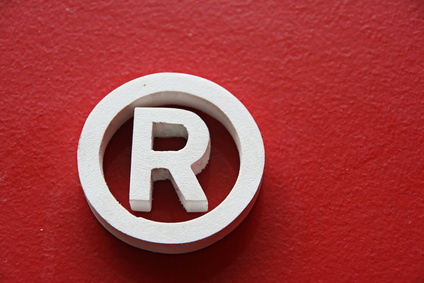The International Trade Blog International Sales & Marketing
5 Strategies for Exporters to Protect Their Trademarks Globally
On: March 12, 2015 | By:  David Noah |
6 min. read
David Noah |
6 min. read
 Trademarks and trade names are a visible, valuable tool in the global business economy. Unfortunately, many exporters don’t realize the importance of protecting and enforcing their trademarks.
Trademarks and trade names are a visible, valuable tool in the global business economy. Unfortunately, many exporters don’t realize the importance of protecting and enforcing their trademarks.
We spoke with Barbara Grahn, a partner who specializes in international trademark issues at Fox Rothschild LLP, about strategies exporters can implement to protect their trademarks. Here are her suggestions:
1. Register Your Trademark
In many, if not most countries, trademark rights are obtained only through registration. In the U. S. and some other countries, you can establish common law trademark rights through use of a mark. While registration provides important benefits that are not available to unregistered marks, there is some protection available for unregistered marks. But many countries follow the first to file rule as to who can claim rights in a trademark.
Because trademark protection is territorial, having trademark rights in one country doesn’t give you rights in other countries (unless you are fortunate enough to own an internationally famous mark). For that reason, it is important to register your trademark in those countries where you need trademark protection. Ideally, you would register your mark or marks in every country where you want your mark protected. But trademark registration can be expensive, and you will need to balance the need for protection with your budget.
When faced with choosing where to register trademarks, you should prioritize by country where you want to seek trademark protection. You should also prioritize your marks. Is it more important to have your primary mark registered in a large number of countries, or to register a number of marks in fewer key countries?
Make your list based on where you are currently doing business, or where you plan to do business, and then you can increase your registrations as your budget allows. It’s often also advisable to register your trademark defensively in certain countries to prevent anyone else from registering your mark.
You can find out more about trademarks and the application process in this article, 10 Terms Exporters Should Know about Intellectual Property, or visit the U.S. Patent and Trademark Office (USPTO) website.
2. Enlist a Trademark Service Watch
You can implement a trademark watch service. These services are available from outside vendors who will notify you when someone tries to register a trademark similar to yours. When notified, you have the option to oppose their registration if they are indeed attempting to register conflicting mark.
3. Use Your Customers and Distributors as Your Eyes and Ears
One often-ignored strategy for protecting your trademark is to recruit your customers and distributors. Ask them to keep their eyes open and notify you if they see or hear of any conflicting trademarks. This is helpful not only for you; it is also in their best interests to keep an eye out for counterfeits, as they could potentially suffer the financial consequences if your trademark or trade name is infringed upon.
4. Use Your Trademark
Using your trademark is important to protecting it. By promoting it, displaying it, and advertising it, correctly and consistently, you add strength and value, and make it’s ownership clear. It’s also important to keep your trademark registration alive and enforceable
In nearly every country, a mark owner is required to use a trademark. There’s typically a grace period after registration (usually 3 or 5 years) in which you need to start using the mark. If you don’t, your registration can be canceled for non-use, and an infringer can require that you provide proof of use of the mark if you try to enforce the mark. You can read more about using your trademark here.
5. Police Your Trademark
Taking action against those who infringe against your trademark is an important part of protecting it. Trademark enforcement is typically adjudicated through the courts.
In the U.S., in order to support a trademark infringement claim in court, a plaintiff must prove ownership of a valid mark, that it has priority (its rights in the mark(s) are "senior" to the defendant's), and that the defendant's mark is likely to cause confusion in the minds of consumers about the source or sponsorship of the goods or services offered under the parties' marks. The process is similar in other countries.
There are other steps you can take short of a lawsuit to protect against infringement of your trademark:
-
You can oppose other applications to prevent other applicants from registering confusingly similar marks.
-
You can send a cease and desist letter.
-
If the situation involves counterfeit goods and you own trademark rights, you can conduct a seizure. (Seizures of counterfeit goods can also be conducted in other countries where you have established trademark rights.)
-
You can resolve the issue by coexistence agreement if the opposing trademark is not a clear infringement and the goods or the channels of trade are different enough that you could coexist with the other use of the mark. A coexistence agreement protects you by limiting the other party’s ability to expand their use of the mark (although it may limit the use of your mark as well).
If necessary, you can bring an infringement action or lawsuit against the other party. This is the ultimate action you will be able to take.
If You Need Help
You have several options to consider when seeking help with enforcing trademark rights.
-
In foreign countries, you need to engage a local counsel. You can do this by hiring a reputable U.S. attorney with an international network of local counsel, because that person will work with lawyers internationally. Generally, you will work with your U.S. attorney, who will hire local counsel to write cease and desist letters, oppose a trademark application, initiate a lawsuit, or take any other enforcement action that’s appropriate.
-
Some law schools with intellectual property programs offer clinics with students and professors who can help you answer your trademark application and enforcement questions.
-
Finally, you can find answers to common trademark litigation questions at the USPTO website.
Like what you read? Subscribe today to the International Trade Blog to get the latest news and tips for exporters and importers delivered to your inbox.
This article was first published in March 2015 and has been updated to include current information, links and formatting.

About the Author: David Noah
David Noah is the founder and president of Shipping Solutions, a software company that develops and sells export documentation and compliance software targeted at U.S. companies that export. David is a frequent speaker on export documentation and compliance issues and has published several articles on the topic.


